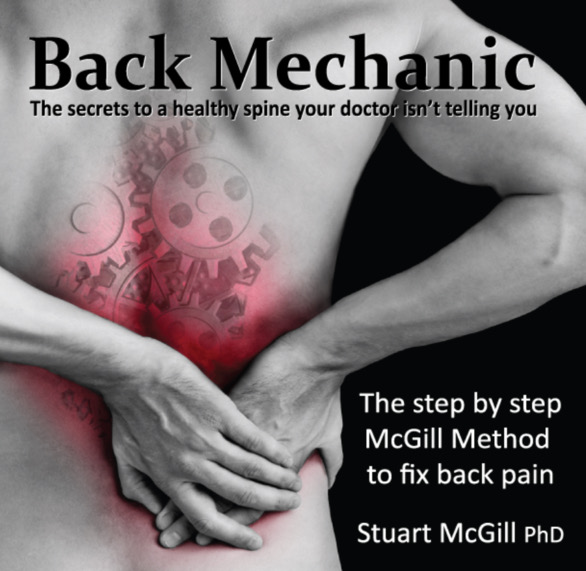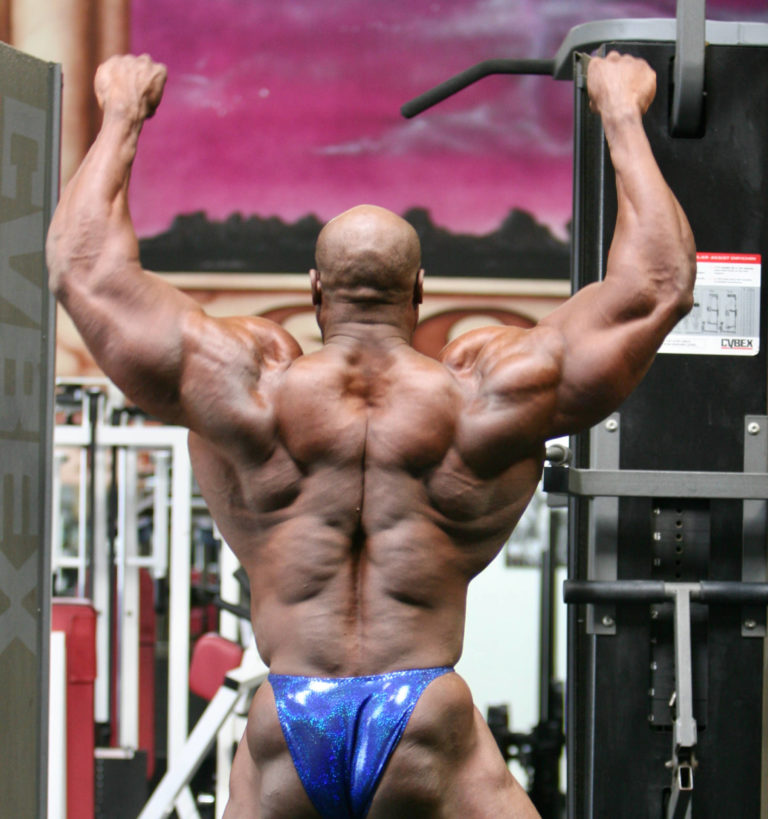Strengh Sensei Bookshelf
Back Mechanic
Stuart McGill’s practical guide to understanding and curing back pain

Got back pain? Had back pain and want to avoid suffering from it again? Never had back pain and want to avoid ever experiencing it? Get Back Mechanic: The secrets to a healthy spine your doctor isn’t telling you.
Yes, there are countless books about how to self-treat back pain. What makes Back Mechanic special is that Stuart McGill, Ph.D., wrote it. McGill is a Professor Emeritus (Spine Biomechanics) at the University of Waterloo. Possessing a Ph.D. in Biomechanics from the University of Waterloo, McGill has published 240 peer-reviewed scientific papers, five books, 25 book chapters, and 140 refereed conference papers about back
pain. Along the way, he has served on the editorial boards of the scientific journals SPINE, Clinical Biomechanics, and Journal of Applied Biomechanics.
McGill has a strong social media presence. Type his name into the YouTube search engine and you will find numerous videos of him sharing his knowledge to the general public in lay terms. And he pulls no punches. For example, in one video, he is asked about the safety of the popular Bulgarian split squat exercises.
Although its proponents claim that the Bulgarian split squat is easier on the spine than squats because less weight is used, Stuart warns that it creates an unnatural rotation of the pelvis. When performed under load for long periods, the Bulgarian split squat may (again, may) cause pelvic laxity that could eventually result in back pain. Such information would be valuable for personal trainers and strength coaches working with
those with a history of back pain. This brings us to the first chapter of the book, “Mythbusting.”
The first chapter of Back Mechanic will get you excited about reading the rest of the book cover-to-cover. It dispels misinformation about back pain presented in a question-and-answer format. Here are a few myths discussed:
Myth: If my chronic back pain was not cured by following my physical therapist’s guidance, surgery is my last remaining option.
Myth: Back pain is linked to having tight hamstrings.
Myth: Lying in bed is good for back pain.
Myth: Stretching is good for reducing back pain.
Myth: Stronger muscles will cure my back pain.
Having gotten your attention, Stuart follows this chapter with “Back to Basics: Getting to Know Your Back and Causes of Pain.” This chapter is a bit more technical (take your time with this one) and explains the basic anatomy of the back and how it functions. From here, you will be taken to Chapter 3 that discusses the surgery option, and then “Chapter 4: The Code: Rules and Guidelines for Back Health.”

Chapter 4 deserves mention as McGill provides 10 guidelines that summarize his self-help approach to dealing with back pain. For example, Guideline #6 is “Buyer beware — not all clinicians are competent.” Here he explains that “there are good clinicians poor ones” and that as a consumer, “you have full right to question why, and how a particular treatment plan is best for you.” He expands on this idea with Guideline #9, which is “One therapeutic size does NOT fit all!”
The remainder of the Back Mechanic is divided into three parts. Part 2 discusses how to determine the cause of your pain, Part 3 explains how to deal with the cause of your pain, and Part 4 could be considered a bonus chapter that discusses special topics such as special exercises for sciatic and a look at some of McGill’s more challenging case studies. Chapter 16 is especially interesting (and for many may be the first chapter they read), as it’s a Q&A where McGill discusses topics such as how to choose a bed mattress and pillow, the value of back belts, and even tips about sex while dealing with back pain.
Although Back Mechanic is written for a general audience, some of the content may be challenging to grasp. For them, consider that McGill offers a book bundle that includes video modules demonstrating the assessments and exercises he describes in the book. For personal trainers and strength coaches, they should go beyond Back Mechanic and study some of McGill’s other books, such as Gift of Injury and Ultimate Back Fitness and Performance.
Purchase a copy of Back Mechanic for yourself and pick up a few more for your friends.
[You can purchase Stuart McGill’s Back Mechanic: The secrets to a healthy spine your doctor isn’t telling you, its companion video modules, and other books by McGill at backfitpro.com.]
For ways to keep your body loose and functioning properly, get our Mobility Webinar and join the Dojo of Strength, which has monthly programs and articles from Charles Poliquin and our team of coaches.
